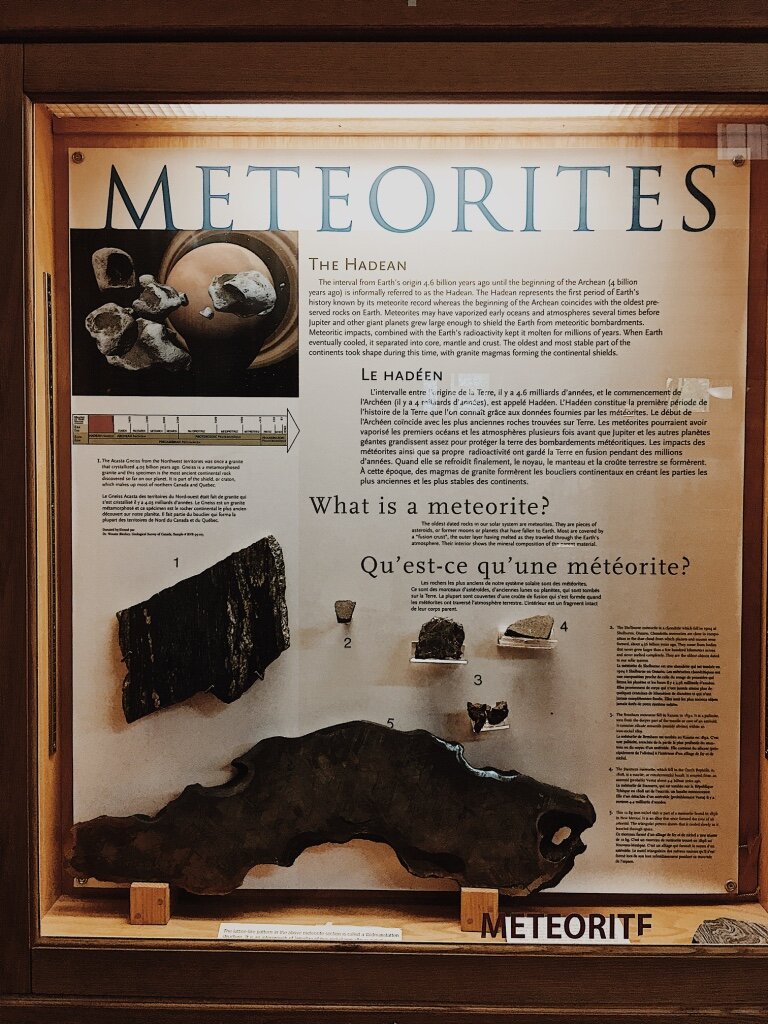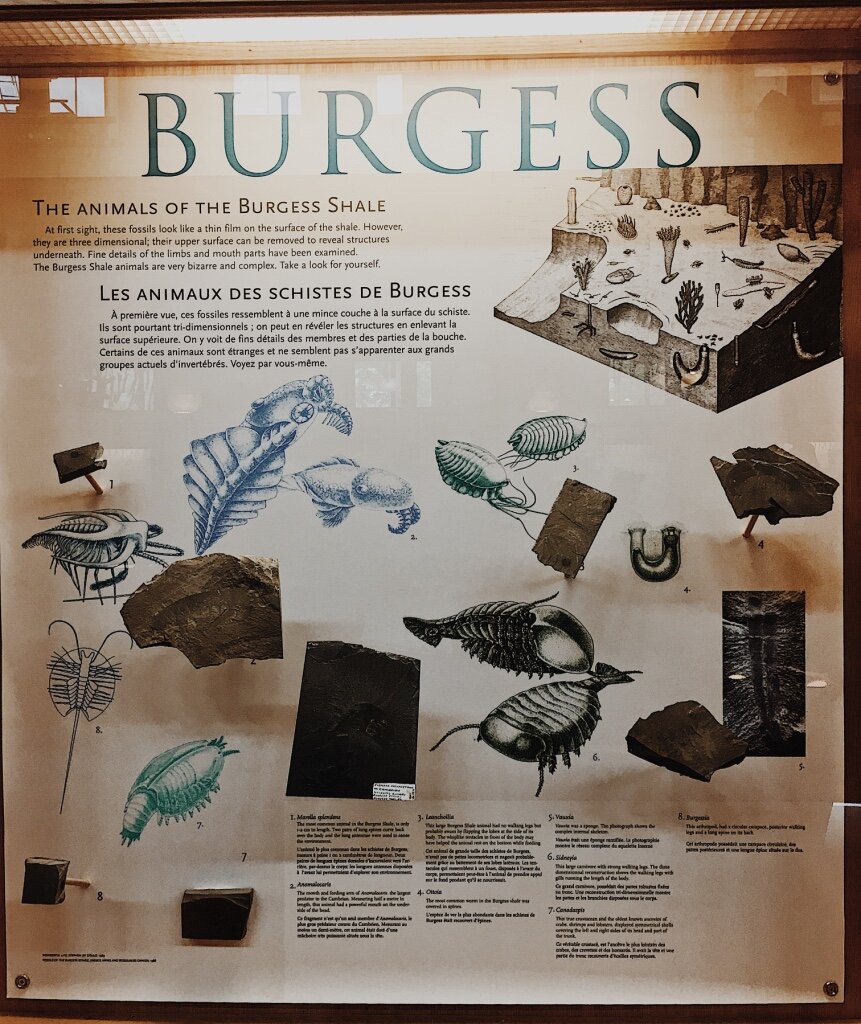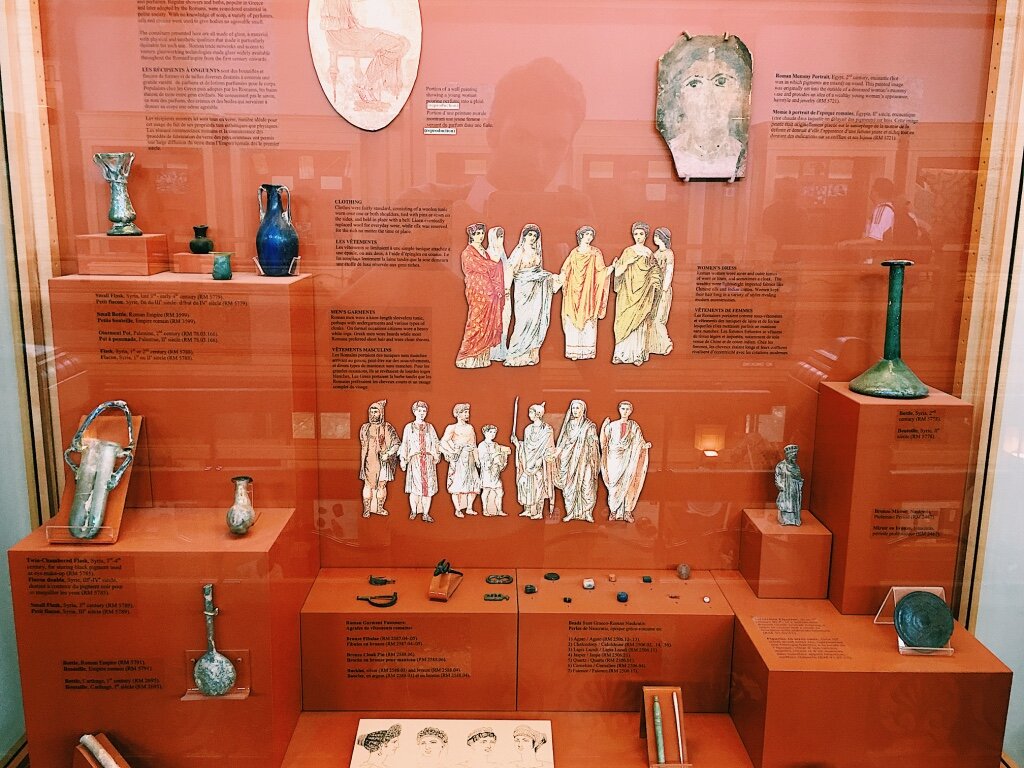Redpath Museum, the ancient time and first civilizations
First thing first
This museum is located in a different place of Canada; it is located in Montréal. Today’s museum, the Redpath Museum, is small but have its interest. It is composed of three sections, each very different from the other. The first one is dealing with minerals and shells. The second one is dealing with wildlife along the different periods on earth since its appearance. Finally, the last one is dealing with the indigenous civilization.
Earth and Water
The first room you are going through exposes various sorts of minerals and shells. For the minerals, there is a wide variety of them, going from common ones like copper and quartz to peculiar ones like Arsenopyrite or Gahnite. (I sincerely don’t know where all those names are coming from).
Concerning the shells, there is also a large variety of things to observe like Murex or Voluta. Even in one of those varieties, there is a lot of different ones as they all vary in shape and size. It can go from something smaller than a nail to a monster that is bigger than your head. It is not my favourite room as I am not interested in this kind of things, but I am still impressed at what nature can create.
Evolution
The second and most significant room is the one about the Evolution. No, it is not a genetic laboratory but a summary of the development of living animals, from its beginning to now. The first significant stage is the underwater era, where all life is originated from. Starting from the meteorites, the events that bring life into our planet. It then begins with small insectoids creatures that were found in the Burgess Shale, in British Columbia.
Few millions of years of evolution later, after passing through different stages (there are just too many for me to cover and it would be boring) came the first fish called Actinopterygii (seriously who invented all those crazy names).
It took a very long time to get the first amphibians and they were very different from anything we can see today. Afterwards, came some very famous creatures that dominated our planet for several millenniums. Those are, of course, the Dinosaurs: the Titans of the past. Next was the Cenozoic, the first era where the mammals finally dominate the planets. The last panel is about the ice-age, an event that massively shapes the appearance of our world and its inhabitants.
Our beginning
The second floor contains the last room, is turned to the different civilization that appears at various places on our planet. This is not a full explanation about who those people were, but there is a small introduction to them. The first ones are the Egyptians with their famous mummies. There is also some potteries and tools they used.Then there is a small section on the Mesopotamian and more specifically what they are famous for, inventing writing. After this, it is the turn of the Roman empire, presenting their clothing style, architectures and their beliefs about the afterlife, including the underworld god Hades. Next is the Japanese Samurai and the dentist in China, the healing technique that they were using in the past and today.It finishes with the tribal clan of Oceania and their medicine, the one in South America and their legendary heads reduction myth. Finally, there is the tribes of Africa with their air styles, Smith techniques and trades with outsiders.









